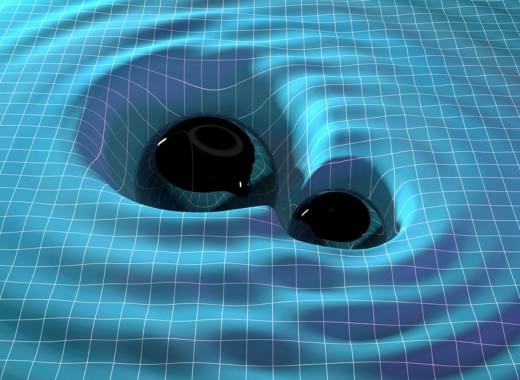A team of researchers have claimed to have recently detected a telltale signature of stimulated Hawking radiation from a post-merger black hole. If the researchers’ analysis of gravitational wave data is correct, then they may have found the first evidence of Planck-scale quantum structure at the event horizon of a black hole (quantum horizons). The key signature of a non-classical horizon is an echo signal in the gravitational waves that are detected after the primary merger event of a binary black hole system. The evidence is tentative, but nevertheless tantalizing. Such research is pivotal to advancing our understanding of quantum effects in strong gravity, where novel aspects of the theory of quantum gravity may be hard at work, as exemplified in the remarkable research The Origin of Mass and the Nature of Gravity, in which physicist Nassim Haramein with his colleagues Dr. Olivier Alirol and Dr. Cyprien Guermonprez have demonstrated that the mass-energy of Hawking radiation from a baryonic-scale mini black hole exactly produces the observed rest-mass energy of the proton, demonstrating that the proton rest-mass is the result of quantum vacuum fluctuations of the electromagnetic field in strongly curved spacetime. The analysis of gravitational wave data for an echo signature, the smoking gun of quantum horizons and Hawking radiation, in conjunction with recent observation of Unruh radiation from accelerating electrons, is a significant confirmation of quantum gravitational predictions of unified physics, which we see in solutions like that of Haramein et al. are the solution to understanding the source of mass and force originating from quantum vacuum fluctuations in curved spacetime. It is a major advancement because Unruh-Hawking radiation can no longer be said to be “only theoretical”
Quantum Black Holes: First Detection of Stimulated Hawking Radiation
Posted in cosmology, quantum physics
